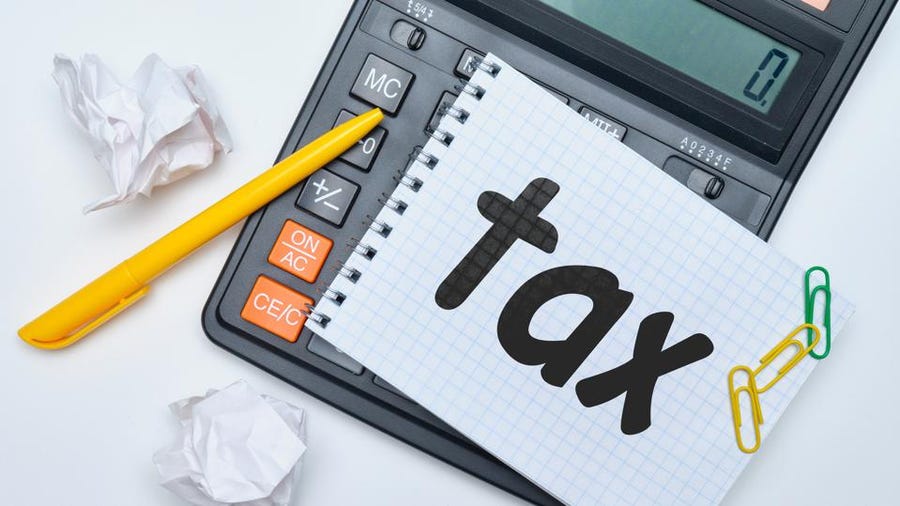WASHINGTON — The Internal Revenue Service reminds taxpayers who’ve yet to file their 2021 federal income tax return to make sure they take advantage of the deductions and credits for which they’re entitled and to file electronically as soon as possible.
“Each year, eligible taxpayers overlook money saving deductions and credits that can help them with the cost of raising a family, daycare, paying for college, saving for retirement or making a donation to charity,” said IRS Commissioner Chuck Rettig. “We want to ensure they’re aware of all the tax benefits for which they may qualify.”
This year, the IRS received about 19 million requests for extensions to file until October 17. Those who qualify can prepare and file their return for free with IRS Free File. Electronically filing and choosing direct deposit can help taxpayers get their refund faster. If they owe, sending the tax return with full payment prevents additional interest and penalties. There’s no penalty for failure to file if the taxpayer is due a refund.
Filing tips for taxpayers who haven’t filed their 2021 tax return are available on IRS.gov.
Taxpayers should consider the following tax benefits when filing their tax return:
- Earned Income Tax Credit: Qualified low- to moderate-income workers and families may get a tax break.
- Child Tax Credit: Families can claim this credit, even if they received monthly advance payments during the last half of 2021.
- Child and Dependent Care Credit: Families who pay expenses for the care of a qualifying individual so they can work, or look for work, can get a tax credit worth up to $4,000 for one qualifying person and $8,000 for two or more qualifying persons.
- Recovery Rebate Credit (RRC): Those who missed out on last year’s third round of Economic Impact Payments (EIP3), also known as stimulus payments, may be eligible to claim the RRC. This credit can also help eligible people whose EIP3 was less than the full amount, including those who welcomed a child in 2021.
- Deduction for gifts to charity: The majority of taxpayers who take the standard deduction can deduct eligible cash contributions they made to charity during 2021. Married couples filing jointly can deduct up to $600 in cash donations and individual taxpayers can deduct up to $300 in donations. In addition, itemizers who make large cash donations often qualify to deduct the full amount in 2021.
- American Opportunity Tax Credit and the Lifetime Learning Credit: Tax credits for higher education can help offset taxpayers’ tuition and other costs by reducing the amount of tax owed on their tax return.
- Retirement Savings Contributions Credit (Saver’s Credit): A tax credit is available for making eligible contributions to an individual retirement account or employer-sponsored retirement plan.
Helpful reminders
The IRS urges taxpayers to ensure they have all their year-end statements in hand before filing their 2021 return. Besides W-2s and 1099s, this includes two statements issued by the IRS – Letter 6419, showing their total advance Child Tax Credit payments, and Letter 6475, showing their total EIP3 payments.
Individuals can also use their IRS Online Account to see the total amounts of their third round of Economic Impact Payments or advance Child Tax Credit payments. Married spouses who received joint payments will each need to sign into their own account to retrieve their separate amounts.
Taxpayers can find answers to questions, forms and instructions, and easy-to-use tools online at IRS.gov. They can use these resources to get help when it’s needed at home, at work or on the go.
Adjust 2022 withholding now to avoid tax surprises next year
Summer is a great time for taxpayers to check their 2022 withholding to avoid a tax surprise when they file next year. Life events like marriage, divorce, having a child or a change in income can affect taxes. Too little tax withheld can lead to a tax bill or penalty. Too much can mean the taxpayer won’t have use of the money until they get their tax refund in 2023.
The IRS Tax Withholding Estimator on IRS.gov helps employees assess their income tax, credits, adjustments and deductions, and determine whether they need to change their withholding. If a change is recommended, the estimator will provide instructions to update their withholding with their employer, either online or by submitting a new Form W-4, Employee’s Withholding Allowance Certificate.
Find a Taxpayer Assistance Center
The Taxpayer Assistance Center Locator tool has a new look and feel, featuring a dynamic map, a directions button and two tabs for entering search criteria. It’s important to remember that Taxpayer Assistance Centers operate by appointment only. Taxpayers must make an appointment by calling the number for the office they want to visit.
Read information in other languages
Many pages on IRS.gov are now available in Spanish, Vietnamese, Russian, Korean, Haitian Creole and Chinese. Some of the multilingual resources include the Taxpayer Bill of Rights, e-file resources and many tax forms and publications.



